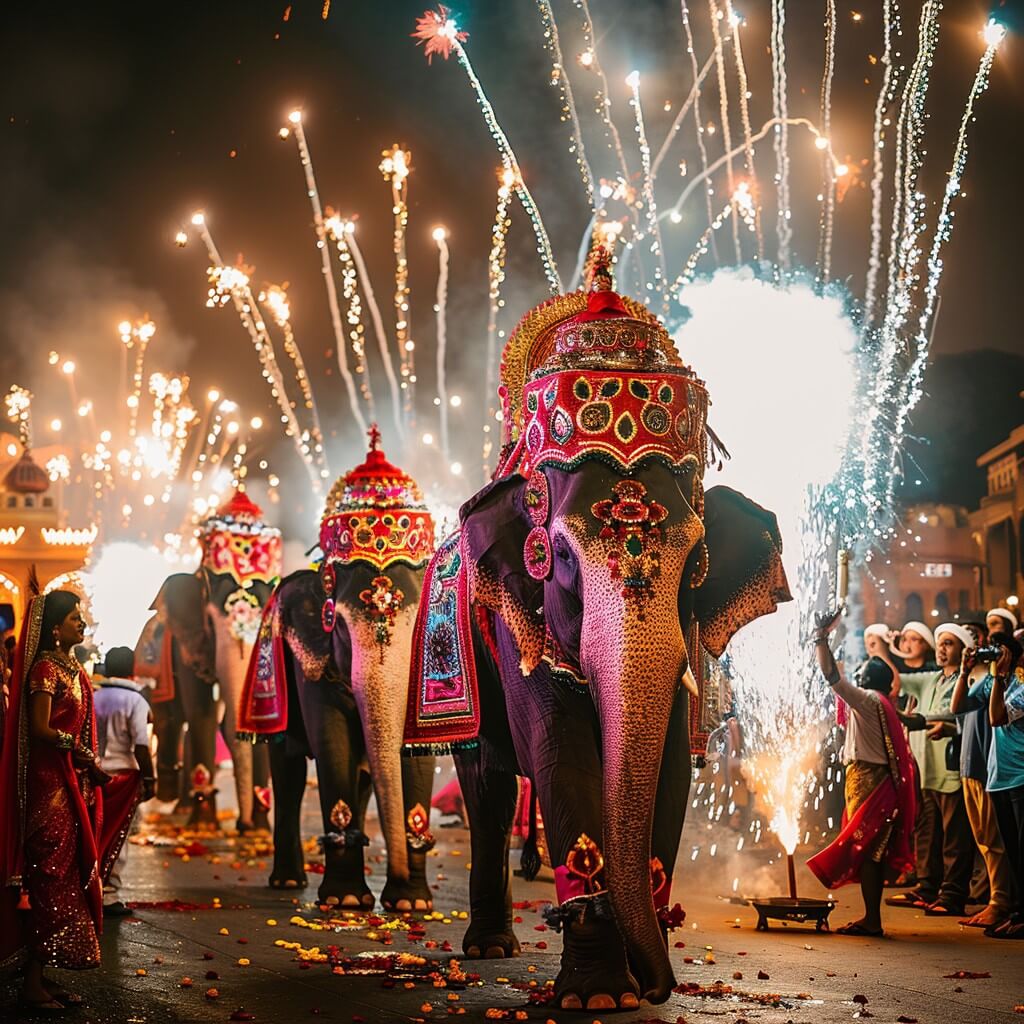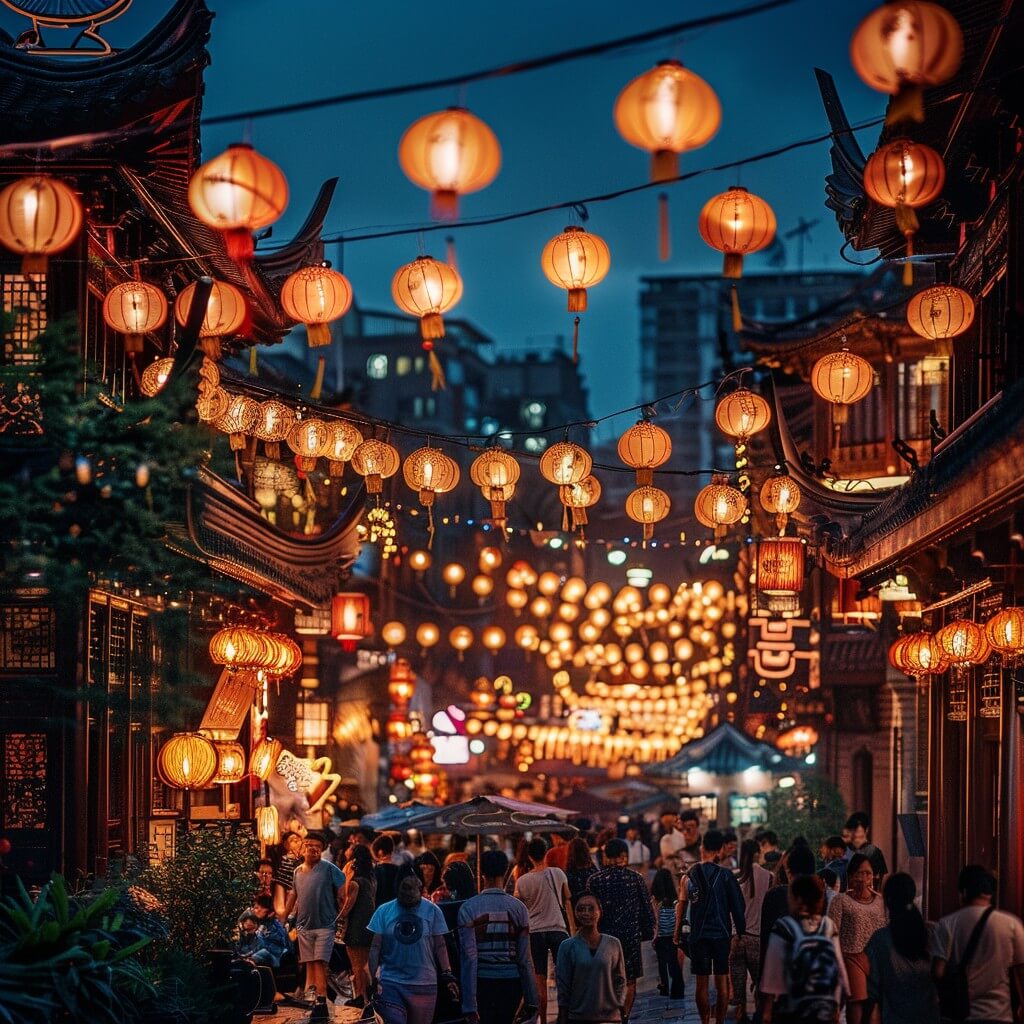Cultural Festivals and Events in Asia: Celebrations You Can’t Miss

When it comes to exploring Asia, many travellers wonder, “What are the must-see cultural festivals and events?” With such a rich tapestry of traditions and celebrations, it’s no surprise that experiencing these events is high on the bucket list for many.
This guide will help you navigate the vibrant cultural landscape of Asia, offering insights into some of the most unforgettable festivals you shouldn’t miss.
Why Visit Cultural Festivals in Asia?
Cultural festivals in Asia offer a unique window into the heart of each country, allowing visitors to experience traditions, food, music, and art up close.
Furthermore, these events are not only visually stunning but also profoundly meaningful, simultaneously reflecting the rich history and cherished values of the people who enthusiastically celebrate them.
Common concerns include:
- Timing: “When is the best time to visit for these festivals?”
- Location: “Where do these events take place, and how do I get there?”
- Preparation: “What should I bring, and how should I prepare?”
Top Cultural Festivals and Events in Asia
Chinese New Year (Spring Festival) – China
When: Late January to February (varies by lunar calendar)
Where: Nationwide
Chinese New Year, also known as the Spring Festival, is the most important holiday in China. Celebrations include dragon and lion dances, fireworks, and family reunions. Streets are decorated with red lanterns and banners to usher in luck and prosperity.
Pro Tip: Visit Beijing or Shanghai for large-scale parades, but don’t miss the smaller village celebrations for a more intimate experience.
History and Traditions: Chinese New Year has been celebrated for over 4,000 years. It traditionally marks the end of winter and the beginning of spring, symbolising the renewal of life. The festival is steeped in myths and legends, such as the story of Nian, a beast that would come on New Year’s Eve to eat livestock, crops, and even villagers. To scare away Nian, people used red decorations and loud firecrackers, which have become enduring symbols of the festival.
Relatable Example: Imagine the excitement of Christmas, the grandeur of Thanksgiving, and the camaraderie of New Year’s Eve all rolled into one. That’s the spirit of Chinese New Year!
Holi Festival – India and Nepal
When: March (varies by lunar calendar)
Where: Primarily North India and Nepal
Holi, the Festival of Colors, marks the arrival of spring and the triumph of good over evil. Participants throw coloured powders at each other, dance to traditional music, and enjoy festive foods.
Personal Story: I joined a Holi celebration in Jaipur, Rajasthan, and it was an explosion of colour and joy. Don’t forget to wear old clothes, you don’t mind getting stained!
Cultural Significance: Many sacred texts like the Puranas and Dasakumara Charita mention Holi, a festival with ancient roots. The legend of Prahlad and Hiranyakashipu primarily defines Holi’s significance. Hiranyakashipu, a demon king, demanded everyone worship him.
However, his son Prahlad was a devout follower of Lord Vishnu. In his anger, Hiranyakashipu tried to kill Prahlad with the help of his sister Holika, who had a boon to withstand fire. Holika took Prahlad in her lap and sat in a fire. Prahlad emerged unscathed, while Holika burned to ashes. This victory of good over evil is celebrated as Holi.
Fun Tip: If you’re travelling to India during Holi, consider visiting Mathura and Vrindavan, where the festivities last for over a week and include special temple rituals and performances.
Songkran (Thai New Year) – Thailand
When: April 13-15
Where: Nationwide, especially Bangkok and Chiang Mai
Songkran is Thailand’s New Year celebration, famous for its massive water fights. Locals and tourists alike splash water on each other to wash away the old year’s misfortunes and welcome the new.
Insider Tip: Chiang Mai offers the most spirited celebrations, with parades, beauty contests, and traditional rituals at temples.
Cultural Insights: Songkran stems from the Sanskrit word “Sankranti,” which means transformation or change. Originally, the festival was celebrated as a way to mark the solar New Year. People engage in water fights as a way to cleanse themselves of misfortunes and bad luck. Traditional customs include visiting temples to pray, offering food to monks, and pouring water over Buddha statues as a sign of respect.
Local Flavour: Experience the culinary delights of Songkran with traditional dishes like Khao Chae, rice soaked in jasmine-scented water, served with various side dishes.
Gion Matsuri – Japan
When: July
Where: Kyoto
Gion Matsuri is one of Japan’s most famous festivals, featuring stunning parades with elaborately decorated floats. The festival dates back to the 9th century and is a grand display of Kyoto’s cultural heritage.
Highlight: The Yoiyama evenings leading up to the main parade are filled with street food stalls and traditional performances.
Historical Context: Gion Matsuri began in 869 as a purification ritual to appease the gods during an outbreak of plague. It has since evolved into a month-long celebration showcasing Kyoto’s rich cultural heritage. The festival is named after Kyoto’s Gion district, a famous geisha area.
Experiential Advice: Arrive early to get a good spot for viewing the parade. The floats, known as “yama” and “hoko,” are massive and beautifully adorned with tapestries and carvings. Each float represents a different district of Kyoto and is pulled by teams of locals through the streets.
Mid-Autumn Festival – Various Countries (China, Vietnam, Malaysia, Singapore)
When: September to October (15th day of the 8th lunar month)
Where: Various locations
The Mid-Autumn Festival celebrates the harvest and family reunion. It’s known for mooncakes, lanterns, and moon-gazing. Each country has its unique twist on the celebration.
Did You Know?: In Vietnam, it’s also known as the Children’s Festival, where kids carry lanterns and enjoy special treats.
Cultural Roots: The Mid-Autumn Festival has been celebrated for over 3,000 years and is linked to the moon worship and harvest rituals of ancient China. The festival is associated with the legend of Chang’e, the moon goddess. It’s a time for families to reunite, give thanks for the harvest, and pray for good fortune.
Practical Tips: When attending the Mid-Autumn Festival, first and foremost, be sure to try different varieties of mooncakes. For instance, you might sample those filled with lotus seed paste, red bean paste, or alternatively, salted egg yolk. Additionally, don’t miss the opportunity to participate in lantern-making workshops, which are particularly popular with children
Diwali (Festival of Lights) – India
When: October to November (varies by lunar calendar)
Where: Nationwide
Diwali, the Festival of Lights, is one of India’s most significant festivals.
It symbolises the victory of light over darkness and good over evil. Families decorate their homes with oil lamps and rangoli (colorful art patterns), while fireworks illuminate the night sky.
Cultural Insights: Diwali is celebrated by Hindus, Sikhs, Jains, and Buddhists across India and worldwide. The festival has different meanings and stories in various regions. In North India, it marks the return of Lord Rama to Ayodhya after 14 years of exile. In Gujarat, it celebrates the new year. For Sikhs, it marks the release of Guru Hargobind from imprisonment.
Personal Tip: Experience the festival in Varanasi, where the ghats (riverfront steps) of the Ganges are illuminated with thousands of diyas (oil lamps), creating a magical atmosphere.
Harbin International Ice and Snow Sculpture Festival – China
When: January to February
Where: Harbin, Heilongjiang Province
Harbin’s Ice and Snow Festival is a winter wonderland featuring massive ice sculptures, ice palaces, and snow activities. It’s one of the largest ice and snow festivals in the world, attracting artists and visitors globally.
Festival Highlights: The festival includes the Ice Lantern Art Fair, Ice and Snow World, and various ice sports competitions. The sculptures are illuminated at night, creating a breathtaking spectacle of light and colour.
Travel Tip: Dress warmly as temperatures can drop significantly. Visiting in the evening allows you to see the ice sculptures in their full illuminated glory.
Baliem Valley Festival – Indonesia
When: August
Where: Baliem Valley, Papua
The Baliem Valley Festival showcases the tribal cultures of Papua. Various tribes come together to perform traditional music, dance, and mock battles, offering a glimpse into their rich heritage.
Cultural Significance: The festival was initially organised to promote peace and unity among the tribes. It is an opportunity for the Dani, Lani, and Yali tribes to display their unique customs and traditions.
Experience Insight: Attend the festival to witness traditional rituals and ceremonies, and engage with the locals to learn about their way of life. The mock battles, though staged, are thrilling and give insight into the tribes’ historical conflicts and alliances.

How to Prepare for These Festivals
- Research the Dates: Festival dates can change based on lunar calendars.
- Book Early: Flights and accommodations fill up quickly around major festivals.
- Respect Local Customs: Learn about the cultural significance and dress appropriately.
- Stay Safe: Be mindful of your belongings, especially in crowded areas.
Conclusion
Experiencing cultural festivals in Asia is a journey through the heart and soul of its people. From the colourful chaos of Holi to the serene beauty of the Mid-Autumn Festival, each event offers a unique perspective on the region’s diverse heritage.
So pack your bags, join the celebrations, and create memories that will last a lifetime.
Consequently, by immersing yourself in these cultural festivities, you not only witness the beauty of traditions firsthand but also, in turn, foster a deeper understanding and appreciation of the communities that steadfastly uphold them.
Whether you’re a seasoned traveller or a first-time visitor, these festivals provide a vibrant, unforgettable experience that will enrich your journey through Asia.
Frequently Asked Questions
Which festivals draw the biggest crowds across Asia?
Asia is home to a diverse array of festivals. Notable festivals include the Taiwan Lantern Festival, where participants release lanterns into the night sky; Holi in India, known as the festival of colours; Chinese New Year, which families celebrate with gatherings and fireworks; Diwali, the festival of lights; and the Ice and Snow Festival in Harbin, China, which showcases stunning ice sculptures.
Which country in Asia has the most festivals?
India boasts the most festivals, both regional and national, of any country in the world.
The country celebrates a wide variety of events throughout the year, reflecting its rich cultural and religious diversity.
What can visitors expect at the Naadam Festival in Mongolia?
During the Naadam Festival, visitors can not only witness but also enjoy a variety of traditional sports, including wrestling, horse racing, and archery.
The festival also includes parades, local food, and cultural performances, offering a deep insight into Mongolia’s nomadic culture and traditions.
When is the best time to experience Holi in India?
Holi typically occurs in March, coinciding with the Hindu calendar’s full moon.
People celebrate with vibrant colors, music, and communal gatherings, symbolizing the arrival of spring and the victory of good over evil.
Participating in Holi provides a unique and joyous experience of Indian culture.
How do Chinese communities celebrate their New Year?
First and foremost, Chinese people celebrate the Chinese New Year, also known as the Spring Festival, with a variety of traditional customs.These include reuniting with family, cleaning homes to sweep away bad luck, giving red envelopes filled with money, and lighting fireworks
Moreover, the festival extends for a full 16 days and ultimately culminates in the Lantern Festival, thereby making it one of the most significant and cherished celebrations in Chinese culture.